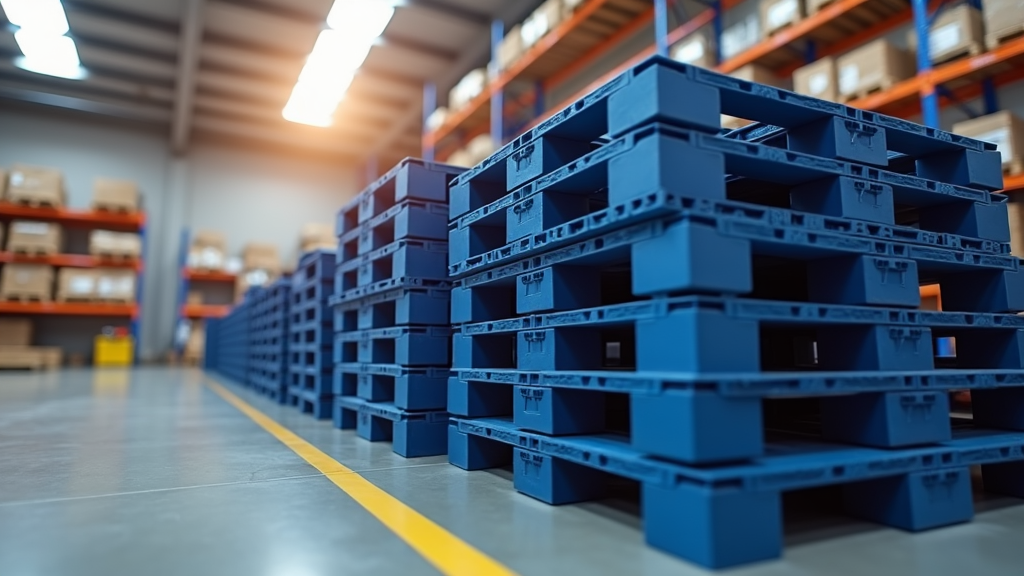Did you know that there are 11,000 warehouses in North America?
What is the most essential part of a warehouse? The warehouse management system? Storage methods? Or is it the equipment itself?
All these are important to some extent, but the most crucial element is the warehouse racks. Without any of these, your warehouse will fall apart in no time.
We will look into some of the most common types of racking for warehouse.

Table of Contents
Selective Racking
Selective racking is the most popular and commonly used type of racking for warehouses. It is also referred to as adjustable pallet racking.
It offers great flexibility as the size and layout of the rack can be easily adjusted. This can match any potential load. This type of racking consists of upright supports and load-bearing components within the rail. Each upright support has a set of beams running down its length. This secures the pallet within the rack.
Goods are stored on the pallets and can be accessed from the front of the rack. This type of racking is perfect for high storage densities and low stock rotation rates, especially when using pallet rack guards that can protect it. It is the most cost-effective type of warehouse racking, as individual pallets can be moved without the help of a forklift or other machinery.
Cantilever
Cantilever racking is a type of racking system that stores long, heavy items such as lumber, steel piping, and other building materials. The beams are fitted to the flat bases. This creates an arm that can hold and store almost any heavy or prolonged product.
These types of rackings are commonly found in lumber, hardware, and other home improvement shops. Because of its efficient design, cantilever racking can be fitted in tight areas where different types of racking may not work.
Cantilever racking is beneficial because it requires no cross-bracing or shelving. It can be placed in long runs to increase the storage capacity. It is excellent for any organization that requires quick and efficient access to its items. It’s also very cost-effective and versatile. This makes it an ideal racking system for warehouse operations. Another good option that can be considered is wire shelving.
Pushback
Pushback is one type of racking for a warehouse. This type of racking is designed to maximize the space available to store goods. It also increases safety by reducing the need to travel down too many aisles.
Pushback racking allows storage of multiple pallets deep – typically two or more. The empty pallet is placed at the end of the row, and the next pallet is stored behind it, pushing it back along the rails. This allows a series of stored pallets to be loaded or unloaded, almost like a ‘domino’ effect.
Other pallets can be loaded at the front of the row and ‘push’ all the stored pallets deep into the racking bay, with the deepest pallet effectively available for picking. This maximizes the open space within a racking bay and warehouse and speeds up access and picking of the goods.
Pallet Flow Racking
Pallet Flow racking is a specialized form used in warehouse storage and retail applications. This type of racking accommodates the movement of pallets, either by gravity or hydraulically-driven rollers, in one direction along a track or “flow.”
Pallet Flow racking is commonly used in distribution warehouses for first-in-first-out (FIFO) stock rotation. It is also great for high-demand storage areas or areas with limited storage space.
Pallet Flow racking is just one type used in warehouses and retail applications. This type of racking ensures the efficient use of warehouse space, providing a safe, organized, and easy-to-access storage solution for all business applications. Pallet Flow racking can be adapted to any warehouse situation and customized to suit the desired load capacity and overall load weight.
Vertical Bar Storage Racks
This type of racking for warehouses is typically constructed from steel and consists of horizontal and vertical bars. It is perfect for storing long, bulky items like lumber, pipes, and steel bars. These racks can be stacked above one another to create a tall support structure.
They are also easy to configure and reconfigure to suit changing storage needs. It provides excellent support and stability when loaded with heavy items.
Vertical bar storage racks can also create a separate aisle in the warehouse, creating quick, easy access to stored items. They are the perfect solution for creating a safe and organized storage system for inventory.
Drive-in and Drive-Through Racking
Drive-in racking maximizes storage space by allowing forklifts to enter the storage environment and deposit products in the first-in, last-out storage format. The forklifts line up pallets across the aisle’s depth and are pushed back until needed.
Drive-through racking is essentially the same as drive-in. However, it is slightly different because the forklifts enter the aisle in the same direction, go to the desired lane, and leave in the same order. Drive-through racking offers maximum efficiency as the forklift can access the pallets at both ends.
Both these types of racking are suitable for storing products efficiently, as order picking, replenishment, and stock rotation are possible with both systems.
Double-Deep Racking
Double-Deep racking, also known as two-deep racking, is a commonly used type of racking system that places two storage bays back-to-back, with access to both aisles of the storage area. This system provides efficient, cost-effective use of space and can be tailored to suit warehouse size and specific storage requirements.
The double-deep racking system helps increase storage capacity by double the loading bays, thus allowing more goods to be stored in the same warehouse space. DoubleDeep racking can accommodate tall and bulky items, providing a safe, secure, and versatile storage solution for multiple items.
Learning the Ultimate Guide of Racking for Warehouse
Various types of racking should be taken into consideration when planning a warehouse. Finding the right style of racking for warehouse is essential for creating a practical storage and distribution center. Talk to an experienced warehouse consultant to help make the right decision for your organization.
To learn more, visit our website now!


